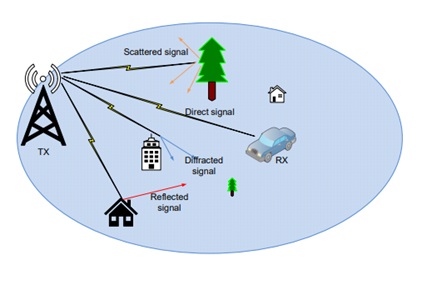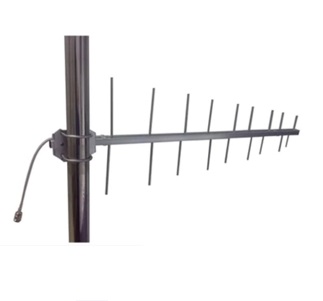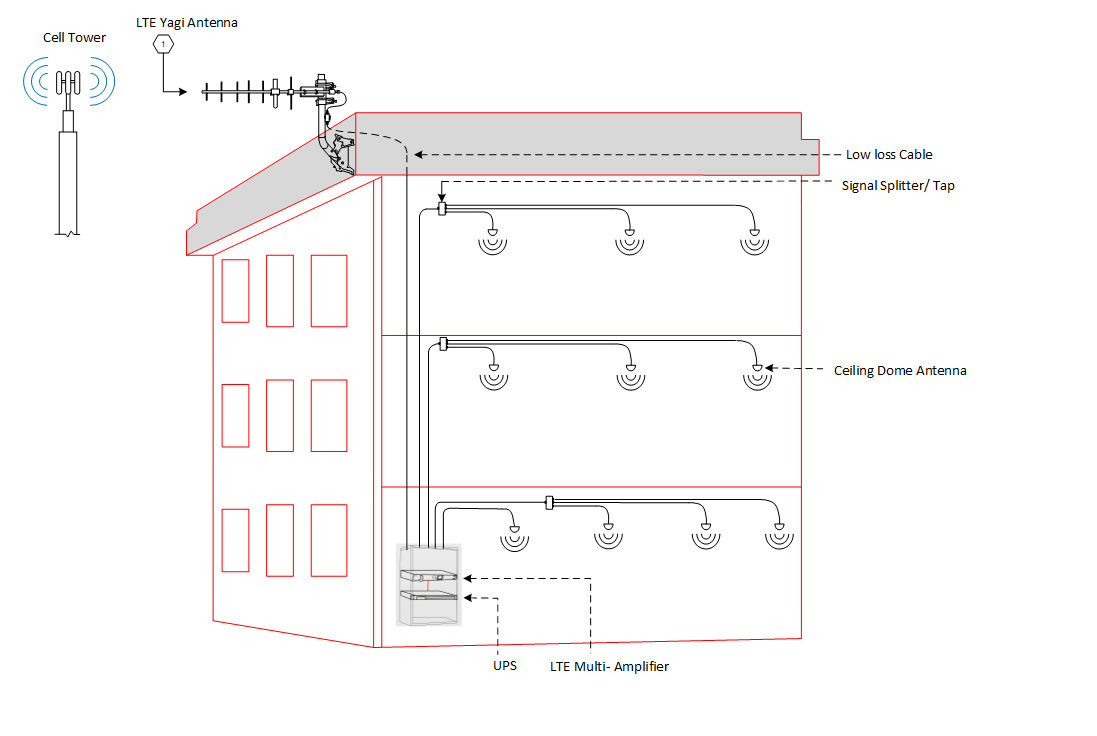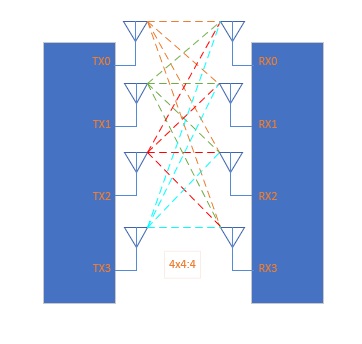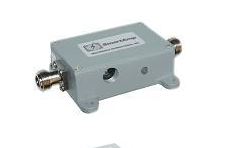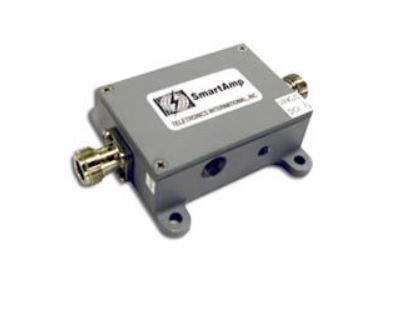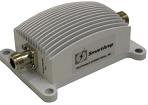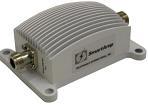WiFi
Cellular Signal Strength ImprovementWhile most users of cellular devices understand that “signal strength” is important for good cellular signal reception, most folks do not realize that “signal quality” is by far a more determinant of the performance of 4G LTE and 5G NR cellular devices. Signal quality is primarily affected by interference. There are different types of interference sources (and different naming) including: self-interference, multiple-access interference, inter-cell interference, intra-cell interference, co-channel interference (CCI), adjacent channel interference (ACI), etc.
Interference is often worse at the cell-edge. Additionally, different LTE/NR bands could exhibit different levels of interference. For example, a low frequency band such as LTE/NR band 71 can help operators achieve wider coverage (because of lower pathloss exhibited by lower frequency signals). However, such lower bands can exhibit higher interference because of the wider coverage and longer wavelengths. On the other hand, mmWave bands can exhibit lower interference because of the narrow wavelengths (narrow pencil-like beams in the order of several millimeters) and shorter range which reduces opportunities for encountering interfering signals. See more on 4G Bands and 5G Bands in use in the U.S. The table below shows recommended RSRP (Reference Signal Received Power) and RSRQ (Reference Signal Received Quality) values for LTE signals.
To improve RSRP of cellular devices, one could use external antennas that have a higher gain than factor-provided internal antennas. See example of antenna kits available for different brands. Contact us if your device is not on our list and has external antenna ports. There are various types of antennas such as yagi, omni, and panel antennas. A directional antenna with high gain may be appropriate for signal improvement when one knows the direction of a cell tower/distribution point.
High gain antennas often have narrower bandwidth. It is possible to combine high gain narrow band antennas covering different bands using RF combiners but there are important trade-offs to consider. Contact us for more solutions on coverage issues. See more antenna options. Sometimes passive antennas alone cannot work and RF bidirectional amplifiers (a.k.a repeaters) are needed to improve the RSRP/RSRQ. The RF BDAs can often provide a better receiver sensitivity than some cellular devices allowing reception of a weaker signal in the presence of noise (receiver sensitivity is the lowest useful signal a receiver can extract and is a function of the receiver"s noise figure (NF)). Poor signals may need 4G LTE/ 5G NR boosters to try to improve the signals because:
Speed ImprovementThe user device sends channel state information (CSI) to the base station (eNB for LTE or gNB for NR). IN general, the better the received signal-to-interference plus noise ratio (SINR) in the CSI, the higher the modulation-and-coding scheme (MCS) chosen for communication between the user device and base station (e.g., better SINR may mean a higher modulation order of 256-QAM vs 64-QAM and perhaps a lower coding rate). Higher MCS provides better speeds. MIMO systems are also used to increase speeds by leveraging a combination of multiple antennas and multiple signal paths. Configurations such as 2x2 MIMO, 4x4 MIMO are used to produce 2 or 4 spatial streams respectively to effectively increase the maximum data rate of what might be achieved in a traditional SISO communication channels.
MultiWAN routers can also be used to improve speeds by aggregating different WAN connections in bonding or load balancing. See more information on link aggregation. With shared spectrum architecture such as CBRS, uncongested channels with wider bandwidth have been made available for use in LTE deployment to provide higher-speed wireless connectivity. Check out CBRS page for more on shared spectrum. 5G deployments are also picking up pace with more 5G sub-6GHz and mmWave devices already in the market. 5G deployments are using various techniques such as MIMO technology, beamforming, and small cell to overcome transmission challenges in these high frequencies as well as achieve faster speeds. 5G is also a promising player for the IoT and connectivity to the cloud. Check out news on 5G NR. |
|||||||||||||||
| See below for different techniques to improve your 4G LTE indoor coverage and/or speeds. Please contact an RFWEL Signal Improvement specialist for a free consultation discussing how you can improve the received signal strength, coverage, or speed for your scenario. | |||||||||||||||
See below for the best Wi-Fi antennas covering different frequency bands and suited for different coverage scenarios. Please contact a RFWEL Signal Improvement specialist for help deciding what Wi-Fi antenna or Wi-Fi signal improvement solution is most ideal for your particular coverage challenges.
Look for signal booster/ Wi-Fi amplifier solutions specific to your Wi-Fi device:
Browse WiFi Repeaters/ Signal Boosters/ Range Extendors in our e-store:
| Compare 2.4 GHz Amplifiers Specs | ||
| Item | Key Specifications | Available at these Online Market Places |
|
Shireen 24201 |
Device Type: 2.4 GHz Amplifiers Coverage Area (approx): n/a Input/Output Ports: N-Male / N-Female |
|
|
Shireen 24203 |
Device Type: 2.4 GHz Amplifiers Coverage Area (approx): n/a Input/Output Ports: SMA-Female |
|
|
Shireen 24251 |
Device Type: 2.4 GHz Amplifiers Coverage Area (approx): n/a Input/Output Ports: RPSMA-Female / SMA-Female |
|
|
Shireen 24105 |
Device Type: 2.4 GHz Amplifiers Coverage Area (approx): n/a Input/Output Ports: SMA-Female |
|
|
Teletronics 12-212 |
Device Type: 2.4 GHz Amplifiers Coverage Area (approx): n/a Input/Output Ports: N-Female |
|
|
Teletronics 12-213 |
Device Type: 2.4 GHz Amplifiers Coverage Area (approx): n/a Input/Output Ports: N-Female |
|
|
Teletronics 12-205 |
Device Type: 2.4 GHz Amplifiers Coverage Area (approx): n/a Input/Output Ports: N-Female |
|
|
Teletronics 12-206 |
Device Type: 2.4 GHz Amplifiers Coverage Area (approx): n/a Input/Output Ports: N-Female |
|


